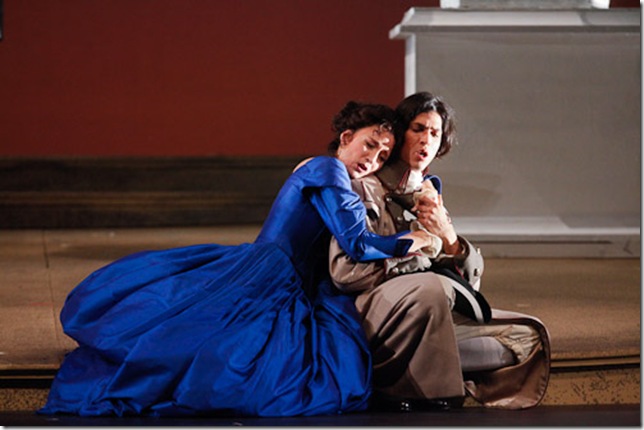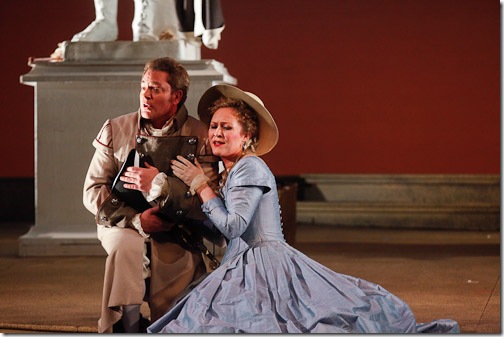This refined, delicate, good-looking production of Mozart’s Così fan Tutte, with swaths of brilliantly lit open spaces, marble statues and lovely costumes, harks back to productions at the Salzburg Festival in 1982 — even down to the same sunshade beach umbrella.
There’s nothing wrong with that: Imitation is the finest form of flattery, after all. It shows the careful planning that went into this staging, because this opera, a bit of puffery really, demands focus on the music. And what brilliant tunes Mozart writes for Lorenzo Da Ponte’s crazy libretto about faithfulness, trust and constancy, especially in this opera, where one man bets his two young friends their sweethearts will not be true to them.
Così fan Tutte came from nowhere. There’s not a line of scholarship to suggest it was commissioned. My guess is that having worked together on The Marriage of Figaro and Don Giovanni, Mozart and Da Ponte decided to have some fun and write about what they knew best: romantic adventures. Mozart’s many love affairs with his lead sopranos are legion. And Lorenzo Da Ponte had been kicked out of Rome and Venice for his womanizing before arriving in Vienna.
It’s not that he was out of ideas. He wrote 50 libretti in his 90-year span. Also, I bet they split the profits. Mozart, hard up as usual, asked his friend Michael Puchberg for a loan in December 1789 on certain repayment from the management of the producing theatre the following January.
“Come to the theatre on 20 January at 10 a.m.,” he wrote Puchberg, “and only you and Joseph Haydn will be allowed to see a rehearsal of my opera.” This is all that’s known of the origins of Così fan Tutte.
I saw Palm Beach Opera’s production of the opera Saturday. Stage Director Stephen Lawless’ handling of the cast in movement and set situations is almost flawless, but there’s too much plopping down, using steps for seats. Give them benches, please!
Also missing was the huge Mesmer magnet Despina uses to revive the “sick” men. Instead, a Benjamin Franklin kite charged with electricity in a storm, replaces the magnet. It fits the time frame of this opera perfectly.
Conductor Gianluca Martinenghi conducted beautifully, letting the orchestra accompany the singers in softer tones than is usual, which highlighted their singing. The refinement began with Martinenghi’s subtle baton in a remarkably exquisite reading of the overture.
Caitlin Lynch as Fiordiligi was superb, especially her Come scoglio in Act I. Her acting and singing mark her as a young soprano on the cusp of a great opera career. Dorabella, sung by Patricia Risley, has a distinct mezzo soprano voice that blended well with Lynch’s, her every acting gesture just right, never overdone.
Abigail Nims, a lovely mezzo, had little to do in this “refined” production. I’ve seen productions of Così where this small role steals the show in vulgar ways. Not so here.
Baritone Andrew Schroeder gave a magnificent account of his role as Guglielmo. He has a finely tuned instrument that flows along like golden honey. And Joel Pietro, the lovesick tenor Ferrando, gave a very fine reading of Un’aura amorosa, the Mozart tune that is most remembered for its phrasing and absolute beauty.
The Don Alfonso of bass Matteo Peirone moved about the stage well but was vocally tired that night; he sings in all performances.
In the Vienna of 1790, this opera had one month’s run in January and a three-month summer run, so if the two authors got their fair share of the receipts, they did well.
Rex Hearn founded the Berkshire Opera Company in Massachusetts. He has reviewed opera in South Florida since 1995.

